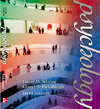The Ideal Person In Ancient China How can you describe an ideal job applicant? Modern business
psychologists mull over the same question that has puzzled administrators
for hundreds of years. Liu Shao, a famous Chinese scholar during the Three
Kingdoms Period (AD 220-280), wrote a book on personality traits 1700
years ago (Yang, 1997). His book was intended for Chinese administrators
who had to fill job openings in the emperor's government. For that reason,
Liu tried to describe the ideal person, who has the perfect mix of traits
and abilities. Liu followed a Chinese school of philosophy named Confucianism, which
emphasizes that everything in the universe should avoid extremes.
According to Liu, each person has two essences that are in balance in a
healthy personality: yin, or passivity; and yang, or activity. Liu divided
human personality types into six pairs, with either excessive yin or yang.
Several of his pairs resemble the modern "Big Five" personality
traits (McCrae and Costa, 1987). The yang-unbalanced "person of
action and energy" and yin-unbalanced "person of reticence and
calmness" compare with the modern Neuroticism (calm vs. worrying)
trait. |



 2002 McGraw-Hill Higher Education
2002 McGraw-Hill Higher Education

 2002 McGraw-Hill Higher Education
2002 McGraw-Hill Higher Education